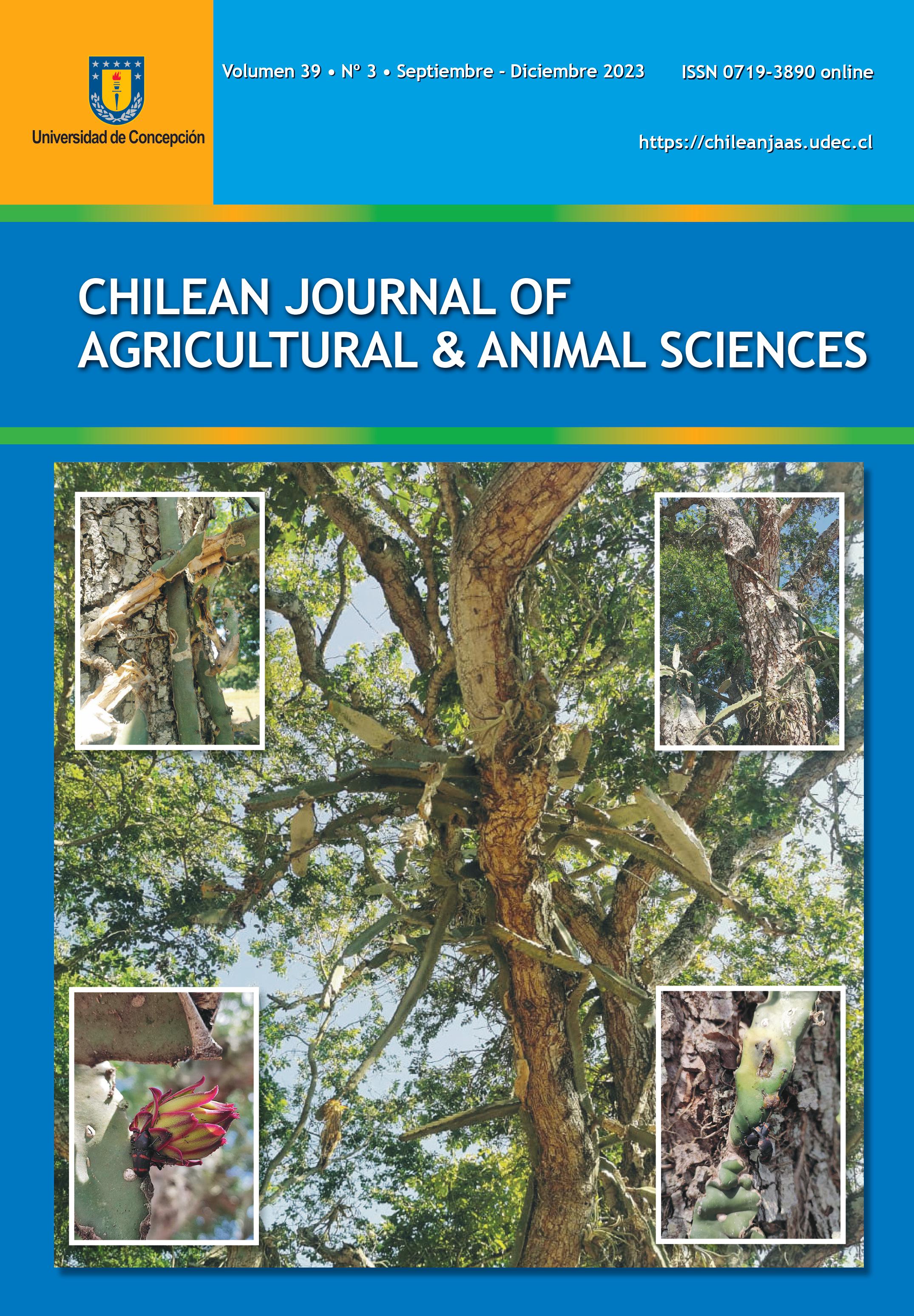PHOTOPERIOD AND PLASMA CONCENTRATION OF ESTRADIOL, PROGESTERONE AND TESTOSTERONE IN CREOLE TURKEY (Meleagris gallopavo Linnaeus), IN THE ÑUBLE REGION, CHILE
DOI:
https://doi.org/10.29393/CHJAA39-32FCMF80032Keywords:
photoperiod, estradiol, progesterone, testosterone, turkey, turkey hen, Meleagris gallopavoAbstract
Photoperiod is one of the environmental signals with the greatest impact on the reproductive stimulation of birds, acting directly on the hypothalamic-pituitary-gonadal axis, and stimulating the production of testosterone in the male and estrogen and progesterone in the female. This study addresses the role of photoperiod on plasma concentrations of testosterone, estradiol and progesterone, in creole turkeys (Meleagris gallopavo) from the Southern Hemisphere. The results may contribute to clarifying the relationships between the number of light hours of the seasonal photoperiod and the seasons with greater reproductive potential. The studies were carried out between July and December in Chillán, Ñuble region, Chile Twenty-four turkey hens and 16 toms were used in a natural photoperiod, negative for short days to positive for long days. Monthly blood collections were carried out using the serum fraction to determine hormonal concentrations through the RIA technique, using commercial kits according to the manufacturer's recommendations. There are significant differences (p < 0.05) in the concentrations of estradiol, progesterone and testosterone throughout the reproductive cycle, with peaks of estradiol, progesterone and testosterone coinciding with the months of September and October, where increases in daily light hours significantly influence (p < 0.05) plasma concentration. In conclusion, the late winter and early spring stage is the period of the greatest reproductive interest for the species in backyard breeding systems in the Southern Hemisphere, favoring the development of conservation and reproduction programs.
Downloads
Published
How to Cite
Issue
Section
Copyright (c) 2023 Fidel Ovidio Castro Reboredo, Makarena A. Rubilar Quezada, Albert R. Carrasco Morales, Luisa L. Iturra Alegría, Jennifer A. Ibáñez Valenzuela, Mario A. Briones Luengo, Cristina Palma Ibáñez, Michele Thompson Dos Santos

This work is licensed under a Creative Commons Attribution 4.0 International License.







